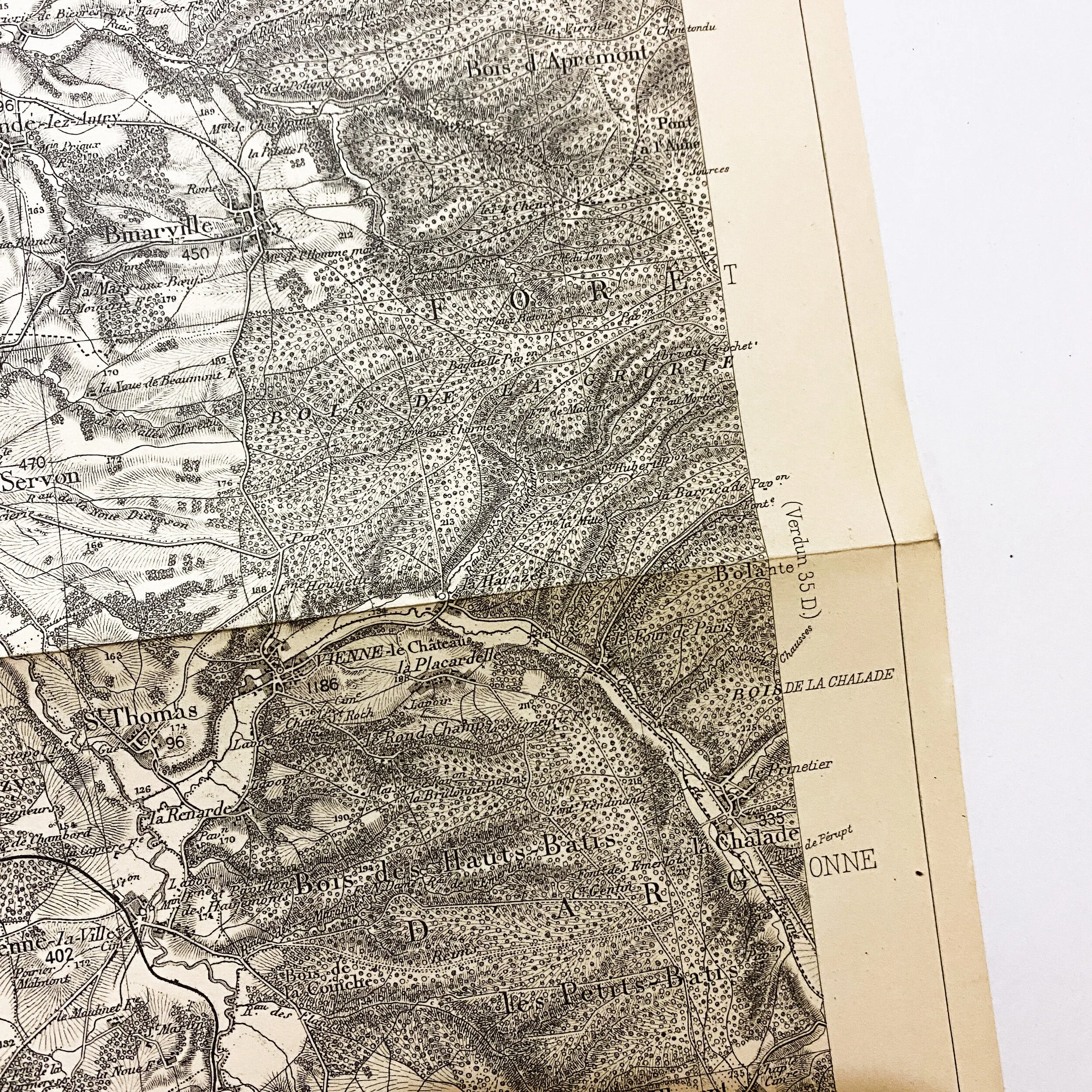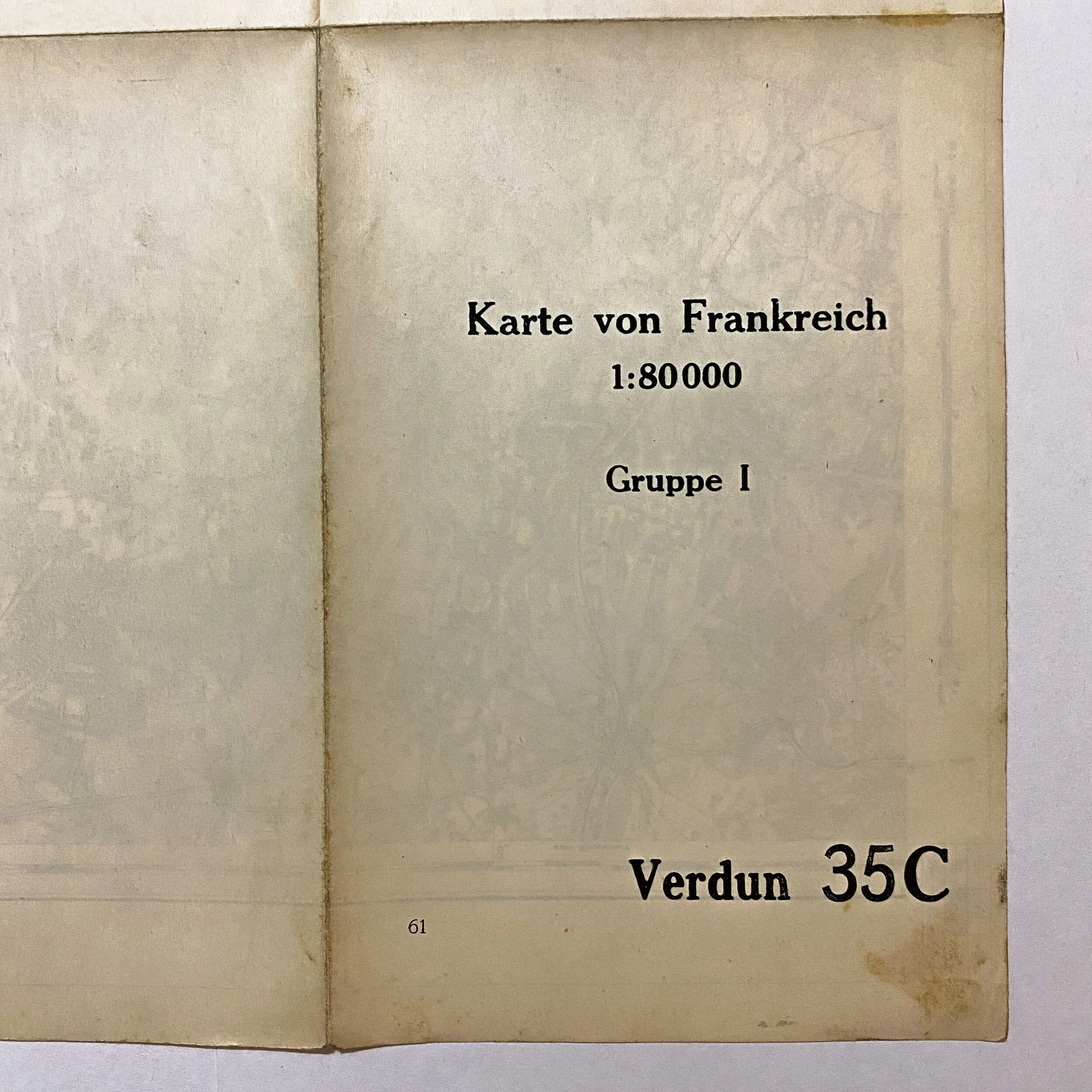Captured German Combat Map of 'Verdun 35C' France Sector














Captured German Combat Map of 'Verdun 35C' France Sector
Size: 18.5 x 12.5 inches
This original WWI German combat map of the ‘Verdun’ France sector is dated 1916. This map is one of 45 taken off of a German major on the battlefield of ‘Rupt en Weurve’ in the St. Mihiel Sector on September 13th, 1917 by Lieut. Harry G. Sheldon of the A.E.F. forces. These maps are broken into sets of 4 being label A,B,C and D of each given sector and district. Putting these section together forms a large map. They are all common scale and can be placed side by side to fit. This map is labeled ‘Verdun 35C’ and is 1 of 4 maps for this given sector.
This map was most likely used during the Somme and Meuse–Argonne Offensive as is features notable battle locations such as Somme, Argonne Forrest, and Courtemont.
Meuse–Argonne Offensive:
The Meuse–Argonne offensive (also known as the Meuse River–Argonne Forest offensive,[6] the Battles of the Meuse–Argonne, and the Meuse–Argonne campaign) was a major part of the final Allied offensive of World War I that stretched along the entire Western Front. It was fought from September 26, 1918, until the Armistice of November 11, 1918, a total of 47 days. The Meuse–Argonne offensive was the largest in United States military history, involving 1.2 million American soldiers. It is the second deadliest battle in American history, resulting in over 350,000 casualties including 28,000 German lives, 26,277 American lives and an unknown number of French lives. U.S. losses were worsened by the inexperience of many of the troops, the tactics used during the early phases of the operation and the widespread onset of the global influenza outbreak called the "Spanish Flu".
Meuse–Argonne was the principal engagement of the American Expeditionary Force (AEF) during World War I. It was one of a series of Allied attacks known as the Hundred Days Offensive, which brought the war to an end. It was the largest and bloodiest operation of World War I for the AEF even if, given the scale of other battles on the Western Front, its size was limited and the operation itself secondary as it was far from the main offensive axis.